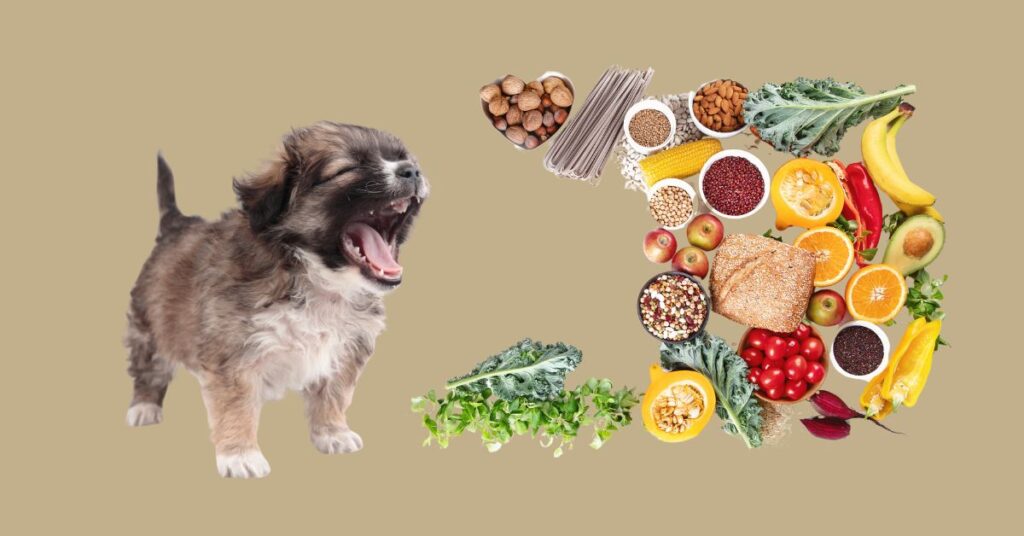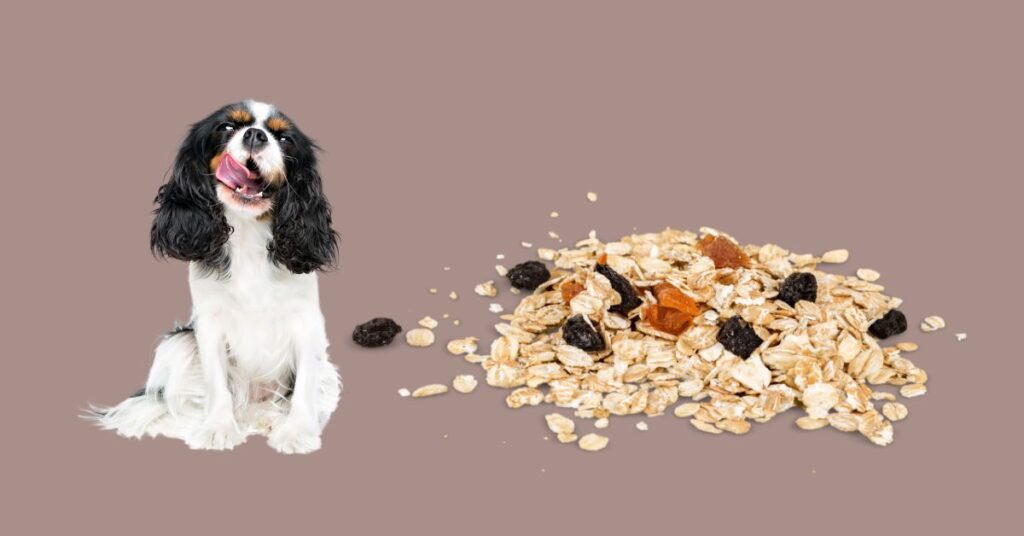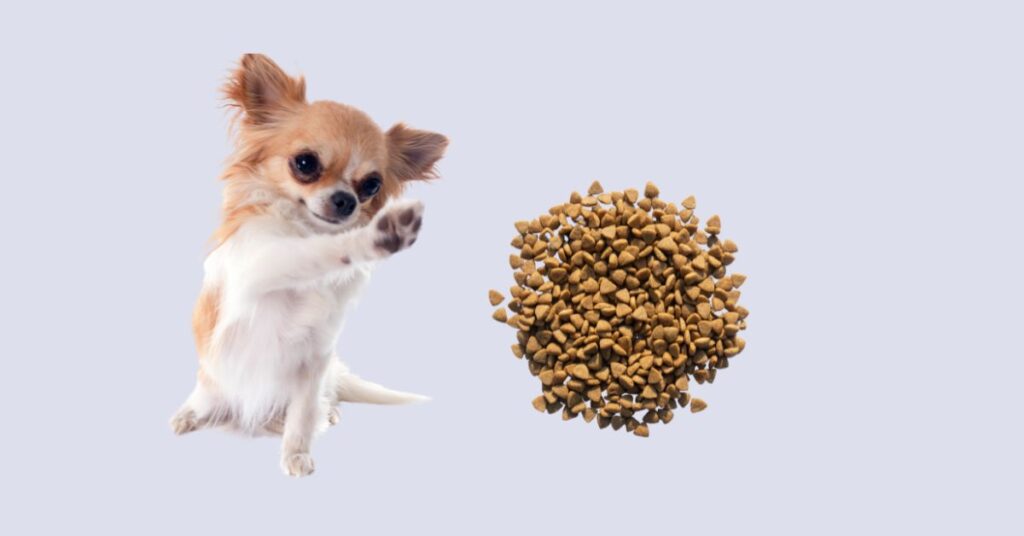For humans and our furry friends, fiber is part of a healthy diet. Only scientifically accurate facts can help your dog digest food properly, maintain a healthy body weight, and function correctly, thereby reducing the likelihood of other health issues or conditions occurring or stabilizing. In this article, we will delve right into the key reasons How to Add Fiber to a Dog’s Diet and the types of fibers available, as well as safe ways to incorporate dietary plans.
The importance of fiber in dogs
Fiber is a specific type of carbohydrate, which the body obviously cannot fully digest. While fiber does not provide calories, it plays a crucial role in digestion and various bodily functions. Benefits of Fiber for Dogs
- Helps Digestion: Fiber aids in the regulation of bowel movements, a crucial aspect of healthy digestion. For dogs with sensitive stomachs, white rice, with its lower fiber content compared to most other types of grains, can help alleviate constipation and diarrhea.
- Aids in Managing Weight: If your goal is to help your dog lose weight, the fiber in fruits makes them feel full for a longer time, which can prevent overeating. In some cases, a high-fiber diet can decrease overall calorie consumption for overweight dogs.
- Balances Blood Sugar Levels: Fiber slows down the rate at which sugar is absorbed in the digestive tract, which can aid in maintaining blood sugar levels. This is particularly beneficial for dogs who are diagnosed with diabetes.
- Source of Healthy Gut Bacteria: Unlike other types of fiber, insoluble fiber serves as a food source for your beneficial gut bacteria. It can enhance the health of the digestive and immune systems.
- Fiber adds bulk to stools, making them firmer and preventing anal gland issues. A more solid stool can do a better job expressing the anal glands as well, thus reducing the risk of blockages or infections.

Types of Fiber for Dogs
Not all fiber is the same. Broadly, fiber falls into two camps: soluble and insoluble. Both vitamin A and provitamin A have their own opinions. BODYFUELZ: It’s not just about sports; it’s much more than that.
- Soluble fiber dissolves in water and forms a gel-like substance. This delays digestion, which helps stabilize blood sugar and also makes you feel full longer. Fruits, oats, and some vegetables contain this.
- Insoluble Fiber: This type of fiber does not dissolve in water. It adds weight to the stool and helps initiate bowel activity. Many vegetables (like green beans and carrots) and whole grains contain insoluble fiber.
We routinely encourage a combination of both styles to maintain overall canine health.
Fiber Requirements of Your Dog
Most dogs consume just 2–5% fiber, which is enough. That said, the quantity will vary by age, breed, and health status as specific nutritional requirements differ. A professional veterinarian can determine the best dog food for fiber before you make any drastic changes to your dog’s diet, ensuring they are eating the proper amount and type of fiber that their body needs.

Practical Tips for Increasing Fiber in Your Dog’s Diet
Fiber life doesn’t have to be overly complex. Simple and healthy ways to increase fiber in a dog diet
1. Introduce vegetables
This is an excellent natural mid-afternoon snack for your dog, rich in fiber, vitamins, and minerals. Remember, not all vegetables are safe for dogs; always make sure you stick to leafy alternatives such as:
- The beta-carotene and fiber in carrots are a fixed idea for a low-calorie snack. Serve raw or slightly cooked, in tiny bite-sized pieces.
- Beans: Beans are high in fiber and low-calorie food, which help you maintain your weight. Serve them without any type of seasoning.
- Pumpkin: full-soluble, fiber-rich, anti-constipation, and diarrhea. You can consume small amounts of pure pumpkin (not pie filling) or fresh, cooked pumpkin.
- Sweet potatoes: Although they are rich in fiber and vitamins, cook them in small amounts due to their high natural sugar content.
- Broccoli: Rich in fiber, your dog can safely consume broccoli as long as he doesn’t consume it in excess. But too much could lead to gassiness, so start slow.
TIP: Begin with small doses so as not to upset your dog’s belly and allow them the opportunity to build a tolerance by increasing servings periodically.
2. Use fiber-rich fruits.
Some dog owners may avoid feeding fruit to their dogs or limit the amount they allow due to difficulty digesting the fiber in fruits.
Remove the seeds and core from the apples and cut them into small pieces. Apples contain soluble fiber and other vitamins, notably vitamin C.
- Blueberries: A beneficial source of antioxidants and fiber. Use freshly or frozen as a snack with added health benefits.
- Pears: Similar to apples, pears are a good source of fiber, but you should remove the seeds and core before feeding them to your dog.
- Bananas: Although they are rich in fiber and potassium, you should only feed them as a treat.
Fruit contains natural sugar, so it’s important to limit the number you eat in a day, as this will cause weight gain and blood sugar spikes.

3. Add grains in moderation.
While whole grains can significantly increase the fiber in your pet’s diet, some dogs may not tolerate them well. If your dog or dogs do not have any grain allergies, then grains are an excellent option for them to consume.
- Brown Rice: You should always fully cook brown rice before consumption, as it is not only an exceptional source of carbohydrates but also fiber. Brown rice can be extremely beneficial for a dog experiencing digestive distress.
- Non-GAS PRODUCING STARCHES Include these in your diet to provide additional soluble fiber, as they are extremely gentle on the stomach. Oats (weaned and pureed) Eat plain, with no sugar or extras.
- Quinoa: Add this grain to your dog’s diet sparingly, as it’s a great source of protein and high in fiber. There are other grains that are generally safe for dogs:
4. A few years later, he was purchasing psyllium husk and Metamucil.
Psyllium husk is a wonderful health supplement and natural fiber. To help with constipation or irregular bowel movements, you can sprinkle a little bit on your dog’s food. Start with a small amount of the food (1/4 teaspoon for small dogs and 1 teaspoon for large dogs), and gradually increase it based on your dog’s response. Next, you can add a full spoon, and if necessary, two spoons.
5. Use Flaxseed
Flaxseed provides fiber, lignans, and omega-3 fatty acids for a soft coat and healthy skin. Give your dog ground flaxseed, but in very small quantities (1/2 teaspoon for a toy or mini breed and up to 1 teaspoon for a large breed) with the food. Store ground flax seeds in your refrigerator to prevent spoilage.
6. Consider high-fiber dog foods.
Fiber plays a crucial role in our dog’s digestive health and weight management, which is why many commercial dog foods include it as an ingredient. When you’re shopping for food, seek out recipes where the ingredients include dietary fiber from beet pulp, sweet potatoes, or whole oats. Before switching dog food brands, always consult your vet to ensure the new food suits your dog’s dietary requirements.

How to Add Fiber to Your Dog’s Diet Safely
However, excessive consumption of fiber can sometimes cause digestive system issues such as bloating, gas, and loose stools. To ensure the safe addition of fiber, follow these guidelines:
- Gradual Entrance: Begin with small quantities and see how your dog responds. What you should do is gradually increase the dosage over time to alter your dog’s behavior.
- Water: As fiber absorbs water, make sure your dog drinks plenty of it. This will enable the fiber to pass through their digestive tracts without any obstructions.
- Fiber Effects Your Dog’s Poop (Stool): Changes in stool consistency may occur. If your dog becomes constipated, has diarrhea, or appears uncomfortable, change the amount of fiber accordingly.
- Ask Your Vet: When in doubt, always consult a veterinarian before imposing any major dietary changes. They can advise you on the right quantity and type of fiber for your dog based on its age, health status, and dietary requirements.
Conclusion
Added fiber in your dog’s nutrition can prove useful to his all-around health, from increasing digestion of food to weight control. You can achieve fiber for dogs through dog-friendly vegetables, fruits, grains, or fiber supplements. Do be sure to introduce fiber slowly, maintain hydration in your dog, and reach out to your vet with any concerns. In the right balance, fiber serves as a healthy component of your dog’s well-rounded diet.
FAQ: How to Add Fiber to a Dog’s Diet
How Do I Know if My Dog Needs More Fiber?
Irregular bowel movements (constipation or diarrhea) they frequently need to have their anal glands drained. Extreme hunger between meals However, it is advisable to first consult with a veterinarian to determine what dietary changes may be appropriate.
How do I know my dog is getting too much fiber?
Too much fiber: If your dog is getting too much dietary fiber, it might present as gas, bloating, loose stools, or diarrhea. Excessive fiber intake can actually inhibit the absorption of nutrients, so if your pup continues to face these symptoms, you may consider reducing their dietary fiber and speaking with your vet.
Is Metamucil good for dogs?
Indeed, dogs occasionally use small amounts of psyllium husk, similar to Metamucil, as a human fiber supplement, but you should consult your veterinarian about the correct dosages and safety of this product before using it with your pet.
The dangers of fiber in a dog’s diet.
As long as you eat a good dose, fiber is relatively safe. When consumed in moderation, excessive consumption of fiber in an attempt to lose weight can result in digestive issues such as bloating, gas, or diarrhea. Too much fiber may impair nutritional absorption as well. Slowly add fiber and seek advice from your vet, particularly if your dog has certain health problems, guys.
The question is: How can you incorporate fiber into your dog’s routine?
Start with fiber-rich pet-friendly foods such as carrots, pumpkin (without added sugar), sweet potatoes, or green beans, and gradually increase the quantity. If your veterinarian recommends it, then incorporate high-fiber dog foods or supplements into your diet. Your dog will need extra water as fiber soaks up liquids.

